7.3 Primates
Primates are a group of mammals that includes lemurs, tarsiers, monkeys, and apes, including humans. Humans are the only primates found worldwide. Non-human primates primarily live in tropical and subtropical regions of South America, Africa, and Asia. They vary greatly in size, from the tiny mouse lemur (about 30 grams) to the massive mountain gorilla (up to 200 kg).
Understanding primates is key to understanding ourselves. Because humans are primates, studying their characteristics and evolution helps us trace the roots of our own species. Primates evolved from small, tree-dwelling mammals over 65 million years ago. This arboreal ancestry shaped many of their defining traits, including hands and feet adapted for climbing and swinging through trees. While not all modern primates today live in trees, these adaptations remain a core part of their evolutionary legacy.
These adaptations include:
- Rotating shoulder joints: Allow for a wide range of arm movement, useful for climbing and swinging
- Grasping hands and feet: Most primates have opposable thumbs and big toes (except humans), which help grip branches
- Stereoscopic vision: Overlapping fields of vision from forward-facing eyes provide depth perception necessary to gauge distances
- Flattened nails instead of claws: Helps in manipulation and tactile sensitivity
- Larger brains: Especially in areas related to vision and social behaviour
- Fewer offspring: Typically one at a time, allowing for extended parental care
Primates are generally divided into two broad groups:
Wet-nosed primates
Wet-nosed primates are generally smaller, nocturnal (more active at night), have a stronger sense of smell, and relatively smaller brains. They are found in Africa, Madagascar and parts of Asia. This group includes lemurs, lorises and bush babies.
Dry-nosed primates
Dry-nosed primates tend to have larger brains compared to other primates. They tend to rely more on vision rather than smell in their perception of the world. These primates also exhibit more complex social structures, often living in large, interactive groups with intricate communication and social bonds. Most dry-nosed primates are diurnal (active during the day), which aligns with their reliance on visual cues. This group includes:
- Tarsiers are small primates found in Southeast Asia. They have enormous eyes for night vision and are known for their powerful leaping abilities.
- Monkeys are divided into two major groups:
- New World monkeys (found in the Americas): Many have prehensile tails and are highly arboreal (e.g. spider monkeys)
- Old World monkeys (found in Africa and Asia): They are generally larger, more terrestrial, and lack prehensile tails (e.g. baboons, macaques)
- Apes are our closest living relatives and share many traits with humans, such as large brains and complex social behaviours (e.g. gibbons, orangutans, gorillas, chimpanzees, and humans)
Human Evolution
Humans are the result of millions of years of evolutionary change. By studying fossils, anatomy, and genetics, scientists have pieced together a story of how several of our ancestral species, known as hominins, gradually developed traits that define us today. These traits, called derived traits, are new characteristics that evolved in a particular group, distinguishing them from their ancestors. As hominins evolved, several derived traits emerged that help set humans apart from our closest relatives, the great apes. These traits include:
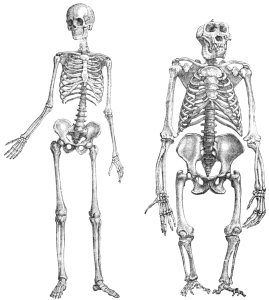
Bipedalism:
- One of the earliest and most important derived traits in human evolution is bipedalism, or walking on two legs. This shift freed the hands for carrying objects and using tools, and it changed the shape of the spine, pelvis, and legs.
Changes in Teeth and Diet:
- As early hominins adapted to new environments, their teeth changed too. Compared to apes, they had smaller canines and thicker tooth enamel, which suggests a shift to a more varied diet that included tough plant materials. The shift to cooking food and using tools to cut up and tear meat also reduced the need for large jaws and teeth, which resulted in a flatter face.
Bigger Brains
- Over time, hominins developed larger and more complex brains, especially in areas related to problem-solving, language, and social behaviour.
Tool Use
- Early humans began making and using tools, which allowed them to hunt, gather, and process food more effectively.
Complex Culture
- Cultural behaviours eventually emerged, such as burying the dead, making art, and possibly using language.
Our species, Homo sapiens, did not appear suddenly but emerged through a long process involving many ancestral species. These ancestral species did not evolve in a straight line but more like a branching tree, with many species that lived, adapted, and sometimes went extinct
There are many key hominin species that help us understand the path to modern humans. Let’s take a look at just a few:
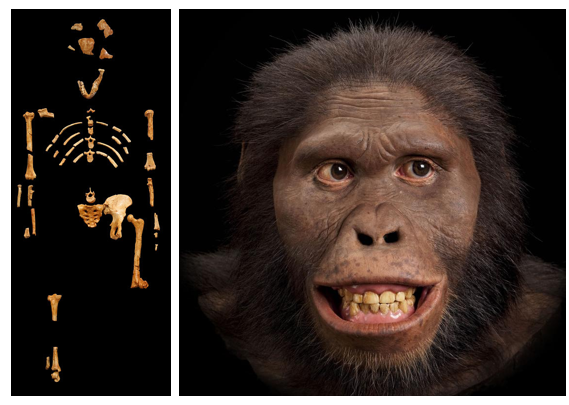
Australopithecus afarensis (3.9–2.9 million years ago)
A well-documented early biped, A. afarensis, walked upright but still had adaptations for climbing. It bridges the gap between more primitive hominins and the genus Homo, showing how bipedalism evolved before large brains. Best known for the famous fossil “Lucy.”
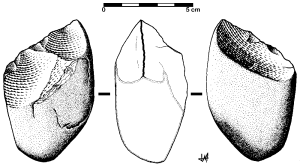
Homo habilis (2.4–1.4 million years ago)
H. habilis is associated with the earliest known stone tools and is often called the “handyman”. It had a larger brain than earlier hominins and marks the beginning of more advanced cognitive abilities.
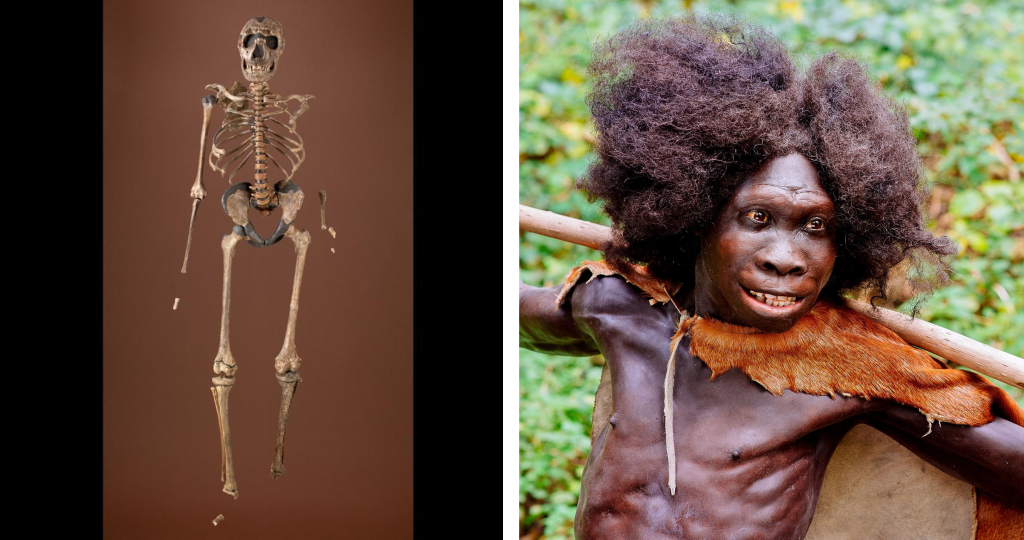
Homo erectus (1.9 million–110,000 years ago)
H. erectus was the first hominin to leave Africa and spread across Asia and Europe. It had a modern body shape, used fire, and made more sophisticated tools, showing increased adaptability and intelligence.
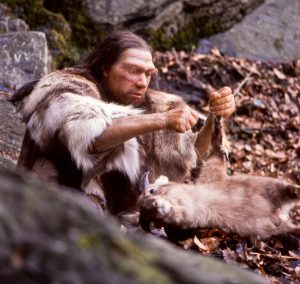
Homo neanderthalensis (400,000–40,000 years ago)
Neanderthals lived in Europe and western Asia and were close relatives of modern humans. They had large brains, made complex tools, buried their dead, and may have used symbolic communication. Genetic evidence shows they interbred with early Homo sapiens.
Homo sapiens (emerged around 300,000 years ago)
Our own species, H. sapiens, is defined by a high forehead, a rounded skull, and advanced cognitive abilities. We developed language, art, agriculture, and complex societies. Fossil and genetic evidence shows we originated in Africa and spread globally.
Knowledge Check
Text Description
- Bony plates instead of nails
- Grasping hands and feet
- Hooved feet
- External fertilization
- Strong sense of smell
- Diurnal activity patterns
- Highly developed vision
- Prehensile tails
in early hominins?
- Flattened fingernails
- Reshaping of the pelvis and spine
- Development of stereoscopic vision
- Use of prehensile tails
and for using fire?
- Homo habilis
- Homo sapiens
- Homo erectus
- Homo neanderthalensis
- They are mostly nocturnal and rely heavily on smell.
- They include only lemurs and bush babies.
- They tend to live in small, solitary groups.
- They have larger brains and more complex social behaviour
Answers:
- C. Grasping hands and feet
- B. Strong sense of smell
- C. Reshaping of pelvis and spine
- D. Homo erectus
- C. They have larger brains and more complex social behaviour
OpenAI. (2025). ChatGPT. [Large language model]. https://chat.openai.com/chat
Prompt: Create 5 multiple-choice questions using the following content
“15.6 Vertebrates” from 15.6 Vertebrates by Colleen Jones is licensed under a Creative Commons Attribution-NonCommercial-ShareAlike 4.0 International License, except where otherwise noted.
“Primate Evolution” from Explorations: An Open Invitation to Biological Anthropology, 2nd Edition by Beth Shook, Ph.D., Lara Braff, Ph.D., Katie Nelson, Ph.D., Kelsie Aguilera & M.A. is licensed under a Creative Commons Attribution-NonCommercial 4.0 International License, except where otherwise noted.

